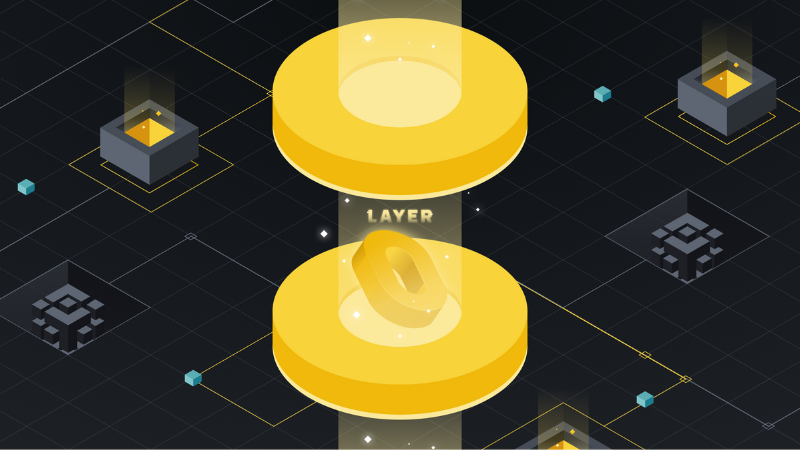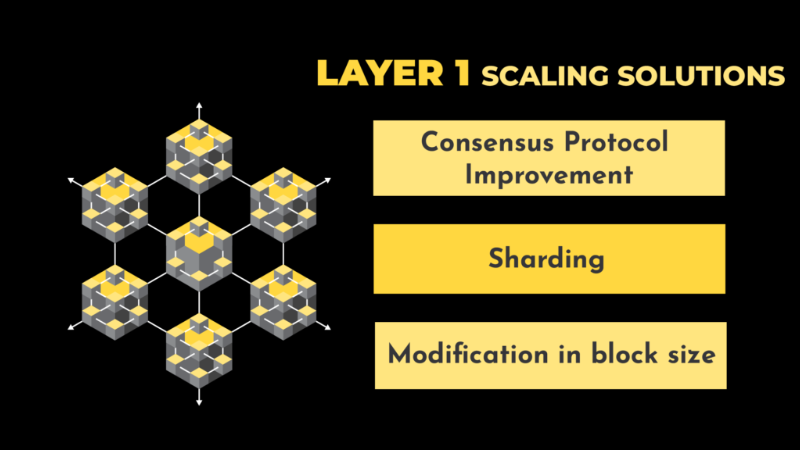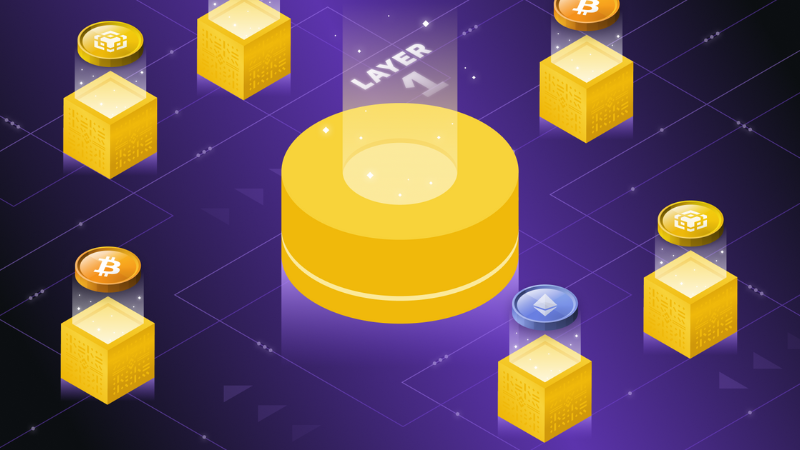Blockchain Layer 1 plays a crucial role in the entire blockchain ecosystem by providing the necessary infrastructure for developing decentralized applications (dApps) and smart contracts. Not only does it ensure security and transaction efficiency, but Layer 1 is also the key to unlocking scalability and innovation within the blockchain industry. Let’s explore Blockchain Layer 1 with Solution Of Blockchain to understand its significance in shaping the future of technology.
Introduction to Blockchain Layer 1
Blockchain Layer 1 serves as the base layer in the architecture of blockchain networks, functioning as the foundational infrastructure for developing and operating decentralized applications (dApps), smart contracts, and on-chain transactions. It is the fundamental layer that ensures security, consensus, and transaction efficiency across the entire blockchain network.
Key Features of Blockchain Layer 1:
- Independent Operation: Blockchain Layer 1 operates independently without relying on any other blockchain network, ensuring autonomy and stability in operation.
- Consensus Mechanisms: Layer 1 networks utilize consensus protocols like Proof-of-Work (PoW) or Proof-of-Stake (PoS) to validate transactions and secure data.
- Support for Development: Blockchain Layer 1 serves as the foundation for building new protocols, applications, or systems without requiring the creation of an entirely new blockchain.
Exploring the Role of Blockchain Layer 1
Blockchain Layer 1 acts as the backbone of the entire blockchain ecosystem, determining the network’s performance, security, and scalability. As the foundational layer in blockchain architecture, Layer 1 supports the efficient operation of decentralized applications (dApps) and smart contracts while maintaining independent functionality.
One of the primary roles of Layer 1 is to provide consensus mechanisms such as Proof-of-Work (PoW) or Proof-of-Stake (PoS) to validate transactions and protect data. These mechanisms ensure decentralization and security, safeguarding the network from potential attacks. Additionally, Layer 1 supports developers in deploying new protocols and applications, creating a platform for innovation in the blockchain industry.
Furthermore, Blockchain Layer 1 is responsible for processing a large volume of transactions and maintaining the state of the distributed ledger. From Bitcoin to Ethereum, Layer 1 networks have demonstrated their irreplaceable role in shaping the future of blockchain technology. Enhancements in Layer 1, such as integrating scalability solutions like sharding or upgrading consensus protocols, will continue to expand blockchain’s potential to drive the growth of the global digital economy.
Categories of Blockchain Layer 1 Scaling Solutions
Scaling solutions for Blockchain Layer 1 focus on improving network performance and transaction processing capabilities to meet increasing demand. Here are three common approaches:
Transitioning from Proof-of-Work (PoW) to Proof-of-Stake (PoS)
Many blockchain networks, like Bitcoin, use the Proof-of-Work (PoW) consensus mechanism to ensure security and decentralization. However, PoW has drawbacks, such as high resource consumption and slow transaction processing.
To address these challenges, some networks are transitioning to Proof-of-Stake (PoS), where transaction validators are chosen based on their stake in the network. PoS increases transaction validation speed and reduces energy consumption but may lack the high level of security PoW provides when stakes are unevenly distributed.
Sharding for Database Partitioning
Sharding is a technique that divides a blockchain network into smaller segments, known as shards. Each shard manages its own set of transactions and data, reducing the workload on the entire network and increasing transaction processing speeds.
In a sharded system, each shard operates independently and reports back to the main chain for data synchronization. This allows nodes to manage only the data related to their shard, rather than storing the entire transaction history.
Block Size Increase via Hard Forking
Another solution to Layer 1 scalability is increasing block size, which represents the collection of transactions processed in a block. Larger blocks enable more transactions to be processed per block, reducing transaction times and costs.
This process is usually achieved through a hard fork—a significant change in the blockchain protocol—resulting in two network versions: one with updates and one without. However, hard forks can cause community division if not all users agree with the changes.
Benefits and Limitations of Blockchain Layer 1 Scaling Solutions
Benefits of Blockchain Layer 1 Scaling Solutions
- Enhanced Scalability: Layer 1 solutions improve base protocols without altering the foundational architecture, increasing transaction throughput, reducing costs, and meeting growing user demands.
- Blockchain Ecosystem Development: Innovations in Layer 1 solutions create a robust foundation for the long-term growth of blockchain ecosystems. They encourage innovation in decentralized applications (dApps) and services by integrating advanced tools and protocols.
- Flexible Blockchain Selection: Developers can choose the most suitable Layer 1 solution depending on project scale and goals, ensuring a balance between speed, cost, and scalability.
Limitations of Blockchain Layer 1 Scaling Solutions
- Trade-Off Between Decentralization and Security: According to Vitalik Buterin’s “Blockchain Trilemma,” it is challenging to optimize security, decentralization, and scalability simultaneously. Efforts to improve scalability may compromise decentralization or security, impacting trust and stability.
- High Computational Resource Requirements: Blockchain Layer 1 networks using Proof-of-Work (PoW) require substantial computational resources to maintain security and decentralization. While PoW is highly secure, its high costs and energy consumption hinder scalability efficiency.
Blockchain Layer 1 serves as the cornerstone of blockchain technology, providing the essential foundation for secure, decentralized, and scalable networks. By enabling efficient transaction processing, robust consensus mechanisms, and supporting the development of innovative applications, Layer 1 ensures the seamless operation of blockchain ecosystems. However, challenges such as the trade-offs between decentralization, security, and scalability highlight the complexity of optimizing blockchain networks. As Layer 1 solutions like transitioning to Proof-of-Stake, implementing sharding, and increasing block sizes continue to evolve, they pave the way for enhanced blockchain capabilities and global adoption.
Solution Of Blockchain will continue to accompany you, delivering in-depth insights and advanced solutions to explore and harness the limitless potential of Layer 1 technology in the digital era.



